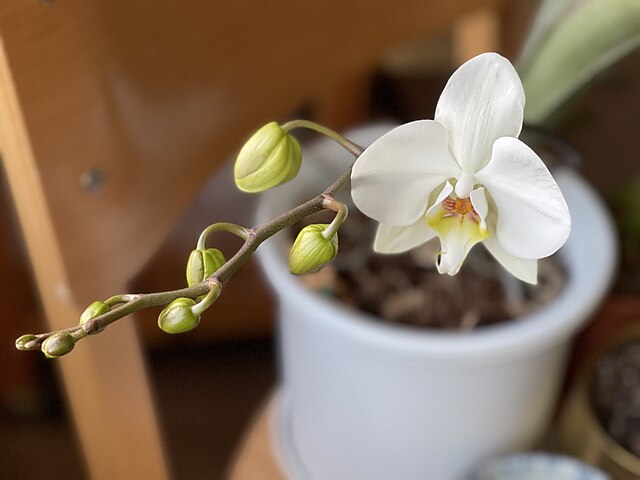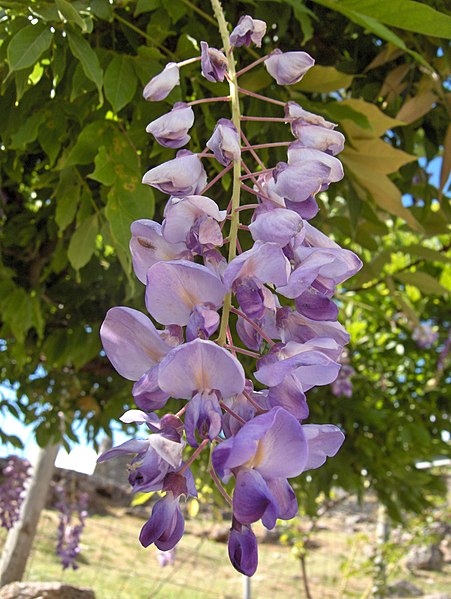A raceme or racemoid is an unbranched, indeterminate type of inflorescence bearing flowers having short floral stalks along the shoots that bear the flowers. The oldest flowers grow close to the base and new flowers are produced as the shoot grows in height, with no predetermined growth limit. Examples of racemes occur on mustard, radish, and orchid plants.
The inflorescence of a Phalaenopsis orchid, is a typical raceme.
The inflorescence of Spathoglottis plicata, a terrestrial orchid, is a typical raceme.
Tightly packed raceme of Xeronema callistemon, with prominent red stamens
Every radiating unit in this inflorescence of a Cyperus sedge is a spikelet composed of small flowers (florets) arranged in two ranks.
An inflorescence, in a flowering plant, is a group or cluster of flowers arranged on a stem that is composed of a main branch or a system of branches. An inflorescence is categorized on the basis of the arrangement of flowers on a main axis (peduncle) and by the timing of its flowering.
Aloe hereroensis, showing inflorescence with branched peduncle
Amorphophallus titanum has the world's largest unbranched inflorescence. Photo of the plant in bloom in 2000 at Fairchild Tropical Botanic Garden in Miami, Florida, US
Ebracteate inflorescence of Wisteria sinensis
Bracteate inflorescence of Pedicularis verticillata.








